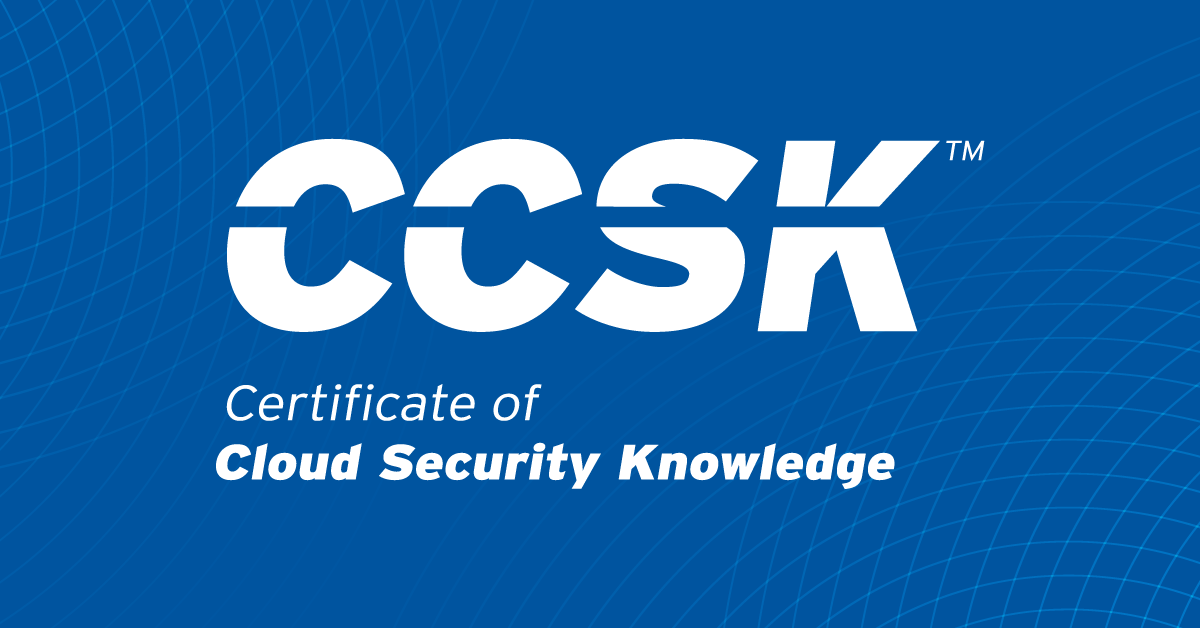CCSK Success Stories: Cloud Security Training from a CTO’s Perspective
Blog Article Published: 11/19/2018
By the CSA Education Team
 We’re kicking off a series on cloud security training today with a Q&A with the Vice President and CTO of Fusion Risk Management, Cory Cowgill. With a background in enterprise software development spanning multiple industries, Cowgill has multiple certifications including Salesforce System Architect and Application Architect, Amazon Web Services Solution Architect, and Cloud Security Alliance Certificate of Cloud Security Knowledge (CCSK). He has presented at Dreamforce, the world’s largest enterprise software conference eight times, and is a member of the Salesforce MVP Hall of Fame.
We’re kicking off a series on cloud security training today with a Q&A with the Vice President and CTO of Fusion Risk Management, Cory Cowgill. With a background in enterprise software development spanning multiple industries, Cowgill has multiple certifications including Salesforce System Architect and Application Architect, Amazon Web Services Solution Architect, and Cloud Security Alliance Certificate of Cloud Security Knowledge (CCSK). He has presented at Dreamforce, the world’s largest enterprise software conference eight times, and is a member of the Salesforce MVP Hall of Fame.
What led you to the Certificate of Cloud Security Knowledge?
The research and work with the CCM (Cloud Controls Matrix) led me to the CSA Certificate of Cloud Security Knowledge. I am a lifelong learner so I decided to take the exam. I recently passed the CSA Certificate of Cloud Security Knowledge, and I found so much of the content directly valuable. I would recommend it to all IT security professionals. It provides a set of comprehensive and vendor-neutral cloud computing principles that are invaluable across security roles and responsibilities. The CSA Security Guidance v4 document will be required reading for all my engineering talent in our organization going forward.
You said you found so much of the CCSK content “directly valuable.” Could you talk more about the specific content you were able to use in your job?
Sure. As a CTO of a SaaS company, I am often engaged in prospect and customer discussion around our products security posture. I have found all of the domains to be helpful, but I find two domains especially helpful based on where a customer is on their cloud journey. Domain 1, "Cloud Computing Concepts and Architectures" is especially helpful when establishing a conversation with a customer who is very early on their journey, helping establish what the shared responsibility model will look like. For customers who are well on their cloud journey, I find Domain 6, "Management Plane and Business Continuity" to be extremely helpful as the management plane is where they customer will be implementing the majority of their security controls under the shared responsibility model.
What’s the value in a vendor-neutral certificate like the CCSK or CCSP versus getting certified by AWS? In what scenario are the different certificates important?
The CCSK or CCSP provide the most value to individuals who may need to work with an array of cloud vendors. Many organizations have a mix of CSPs who provide a range of SaaS and IaaS solutions. Individuals responsible for the overall security posture of the organization cannot be expected to hold a certification for each CSP's technology stack. This is where the CCSK or CCSP become valuable as you have a credential that is relevant to assessing the overall security posture regardless of vendor specific technical details. Vendor certifications are valuable to those individuals in the organization who are configuring and administering those specific CSP solutions.
What’s a common problem you see organizations struggling with when migrating to the cloud?
As the CTO I am frequently engaged in discussions with customers and prospects around the security posture of our SaaS product. It is no small understatement to say that there is a lot of education that needs to be done within enterprise IT security teams. Companies struggle to ask the right questions around cloud security as many still do not fundamentally understand the benefits of the cloud. Each organization has a separate set of questions or controls they want to discuss which takes considerable effort from both internal IT security resources and SaaS provider security teams.
This led me to the Cloud Security Alliance (CSA) and the Cloud Controls Matrix (CCM). The CCM addresses these pain points by providing a standardized controls matrix that can be used to drive the discussion between cloud vendors and cloud customers.
How did CCM help communicate with customers?
By providing our standard CCM to prospects and customers along with our other compliance certifications and security assets we can rapidly assure customers and prospects that we are "Protecting the covenant of trust."
When you said, “companies struggle to ask the right questions around cloud," what types of questions do you think they need to be asking?
Many of the questions I respond to are very granular, infrastructure-related questions phrased or worded in terminology that is very specific to on-premise services. I seldom get asked about the management plane and the security controls and capabilities that fall under the responsibility of a customer in the shared responsibility model. The major CSPs have extremely mature security controls with compliance, certifications, and other attestations around their infrastructure components. While important to review that material and understand the infrastructure controls, the greatest risk is misconfiguration of the cloud services by the customer. Therefore, customers and prospects would be better served by understanding the management plane and security controls that are their responsibility to configure. This applies to all service models whether SaaS, PaaS, or IaaS.
While important to review that material and understand the infrastructure controls, the greatest risk is misconfiguration of the cloud services by the customer.
Some people are unfamiliar with the CSA Security Guidance. What would you compare it to?
All of the major cloud vendors across the service models have detailed documentation and guidance on their security postures and available controls. However, most enterprises have multiple cloud service providers with different delivery models and what is missing is a way to establish a common dialog across these CSPs' security capabilities. In this regard I would compare the CSA security guidance to a critical guidebook that helps you establish a common dialog across CSPs as you evaluate their security postures.
What’s the biggest hurdle for security professionals who aren’t familiar with the cloud yet?
I think the biggest challenge is that there are so many different cloud technologies which can cause analysis paralysis. Do I get started with IaaS? If so do I pursue AWS, Azure, or Google? Do I start with a huge SaaS / PaaS vendor like Salesforce or ServiceNow? What will be most relevant? And when you couple this large array of CSPs with continually evolving technologies like serverless, it can be overwhelming to many. My advice is you can't go wrong with any one vendor. You kind of need to just dive in the pool so to speak. Keep up the great work CSA!
If you’re interested in learning more about cloud security training for you or your team, please visit our CCSK Training page.
Cory Cowgill is the Vice President & Chief Technology Officer, Fusion Risk Management, Inc., where he is responsible for research and development, customer engagement, operations and security, and go-to market initiatives. With a background in enterprise software development spanning multiple industries, Cowgill leads with a dedication to technology and risk management.
Related Articles:
2024: A Critical Year for the Cloud Security Teenager
Published: 12/29/2023
Are You a Fit for CSA’s Advanced Cloud Security Practitioner (ACSP) Training?
Published: 12/07/2023
CSA’s PayForward Cloud Security Training Program
Published: 05/26/2023







